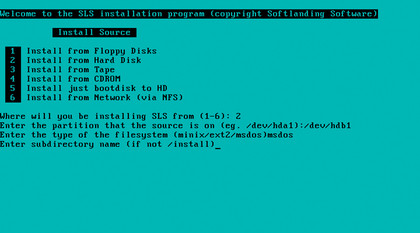The history of Linux: how time has shaped the penguin
A nostalgic look back at Linux, its distros and its colourful history

As we sit in front of the latest version of Ubuntu, Fedora or SUSE, revelling in the glorious animated desktops, taking pleasure in the ease-of-use the GUI grants and enjoying the fact that most of our hardware works out of the box, do we ever wonder how on Earth our favourite operating system got to this point?
Do we consider and appreciate the amount of time and effort that a long list of developers have taken in reaching this Zen-like state of man and OS? Most likely, not.
A quick reminisce of Linux distros long gone made us think about the history of this wonderful OS, and its journey over the last couple of decades. When was it born? How did it evolve? What distros stand out in history as the pivotal turning point that changed a humble bedroom project into the desktop OS we have today? And which poor distros fell by the wayside as failed, crumpled heaps?
Let's, then, take a step back in time as we embark upon a chronological look at Linux, and see how history has shaped the mighty penguin.
1991
Humble beginnings…
In the beginning, there was Unix, created by the bearded ones, Ken Thompson and Dennis Ritchie, in 1969. After that, throughout the eighties, a number of projects started life, all based on the encompassing vision that is Unix.
From Richard Stallman's GNU Project, the Berkley Software Distribution (BSD), the book Operating Systems: Design and Implementation by Professor Andrew S Tanenbaum, through to MINIX (Mini-Unix), which was released to the academic world in conjunction with the aforementioned book.
Sign up for breaking news, reviews, opinion, top tech deals, and more.
But it wasn't until 1991 that a young Finnish student called Linus Torvalds would combine all he had learnt from the those landmark systems into a kernel that would take the world by storm.
There are many legends that tell of the start of Linux, one of which is: Linus, while playing around in MINIX, piped data to his hard drive instead of his modem and wiped out the MINIX partitions he had created, thus leading to his frustration at the limits of the OS and his decision to create his own.
Another version has it that he wrote the kernel to gain better functionality of the new Intel 386 machine he was using. Another, still, says that he was barred from further improving MINIX, and so went on to develop his own.
Whatever the real story is, he created a free terminal emulator that was based on MINIX, which was based on Unix and would eventually become the workings for an operating system kernel. On 25 August, 1991, Linus posted his now famous message on the MINIX Newsgroup.
After that, FTP servers around the world became a-buzz with versions of Linux (originally named Freax), which grew at an astounding rate due to the number of contributors involved.
Version 0.01 of Linux is a far cry from what's available these days, but if you want to get your hands dirty, point your browsers to here and download the 71KB kernel in all its glory, along with the release notes from here.
Unfortunately, we can't stay in 1991. Needless to say, though, Linux evolved into a fully-blown OS, with the Manchester Computing Centre creating one of the first distributions that used a combined boot/ root disk, named MCC Interim Linux.
1992 to 1994
The growth of the desktop founders

Not much of a time jump, but between 1992 and 1994 we saw the rise of the most influential founders of the modern Linux desktop: Slackware, Red Hat and Debian, along with the Linux kernel growing to become 0.95 - the first to be capable of running the X Window System.
Slackware had something of a rocky start, although one of the first systems to adopt the 'new' Linux kernel at that time, Slackware started life as SLS, the Softlanding Linux System, as founded by Peter MacDonald in 1992.